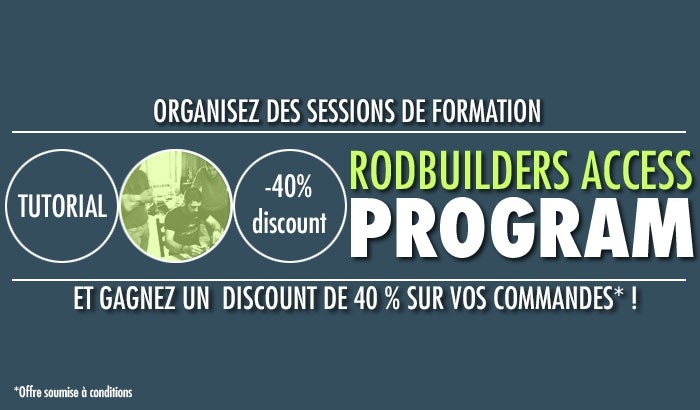
First of all, the setting : the office and production buildings are set in a really cool place. There’s grass, water, lots of space. An old red pick-up truck that looked like an early-seventies Chevy CK10 is on the parking lot. Belongs to one of the builders, Alex said. Cool.

We started with a quick tour of the offices : Alex’s, Gary’s, administration and so on. Blanks are all over the place, that’s crazy. Not that it’s a mess, but just plenty of blanks. Some fly blanks here and there, it looks like we could be in for a surprise one of these days...
On to the next building, the one that we really wanted to see : production !

On the first room Alex shows us, the master cutter is working on carbon prepreg sheets and cuts them into the right shape for a given blank. It’s a large room where temperature is controlled so that it keeps cool, so that the resins in the prepregs don’t get sticky or runny. That makes them easier to manipulate. The cutter starts from a rectangular sheet of prepreg and cuts off one angle. It’s easy to tell that the action of a blank will vary according to how much material you cut off and where you start the cut.

There’s a lot of carbon sheets and rolls in there ! Alex explains that they source graphite from the best providers and have it made to their own specifications. That says a lot about how much the NFC crew know about materials.
Then Alex shows us the difference between IM and HM by tearing two small pieces dug out from a bin : on the IM piece, the glass fiber is easy to easy between the two layers of graphite. That’s a glass scrim, which is what you find on most blanks. Then he shows us the HM piece and it’s a different story : a very thin layer of carbon is used as scrim.

By the way, what exactly is scrim ?
The scrim is what allows your blank to bend without snapping – up to a certain point, quite obviously. Gary often uses the example of bamboo to explain the role of scrim : on a section of bamboo, the rings allow it to bend without snapping, as they allow the rod to bend without collapsing on itself. Scrim does the same as it avoids the ovalization of the blank and limits the strain on both sides of the blank (stretching on the upper side, compression on the lower side). Scrim is what gives hoop strength and resistance to our favorite blanks and is generally set under a layer of unidirectional graphite.
Most of the blanks in the market are made with glass scrim prepregs, which is a bit thicker and heavier than carbon scrim. On his HM blanks, Gary uses carbon scrim to make them lighter, faster and even more sensitive. The fact that carbon scrim is thinner than glass scrim is the reason why the HM blanks by North Fork Composites feel more sensitive and have a slightly different action from their IM counterparts.
Back to the factory tour : once the prepreg sheet is cut, the un-cut side of it is applied by hand on a metal mandrel. The operator (

The blank then goes to another operator : it is inserted into a machine whose job is to get rid of any remaining air that could be trapped in and to cover the blank with a layer of cellophane. Three metall rolls rotate around the blank as it slides out of the machine. The blank is now wrapped in cellophane and ready for the oven. The conditions inside the oven are specific and a secret.

Once the blank is « cooked », it is stripped of its cellophane wrapping and the wet sanding process begins, by a machine first, and then by hand. When you see how those guys work, there again, it’s easy to see that expertise is a must !

The blank is now finished. A sticker goes on it for identification, then it goes into a blister off to the warehouse, where Steve will ship them over to us.

We really enjoyed that factory tour at North Fork Composites, as it allowed us to see how professional the team is. Not that we doubted it, as the qualities of their blanks speak for themselves, but it was really great to see it for real. And needless to say, the staff weren’t prepared for the visit, as Alex decided to show us around as we spoke. They were working as usual, and doing it well. And that’s what made the whole experience so interesting.


Many thanks to Alex, Gary and all the team at North Fork Composites !

